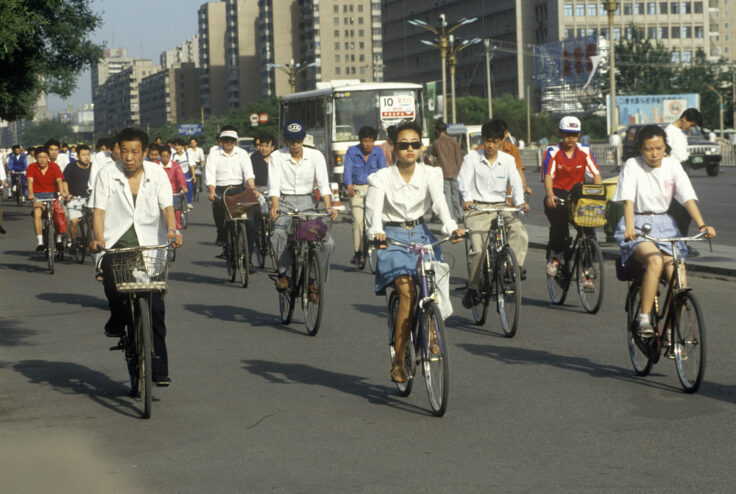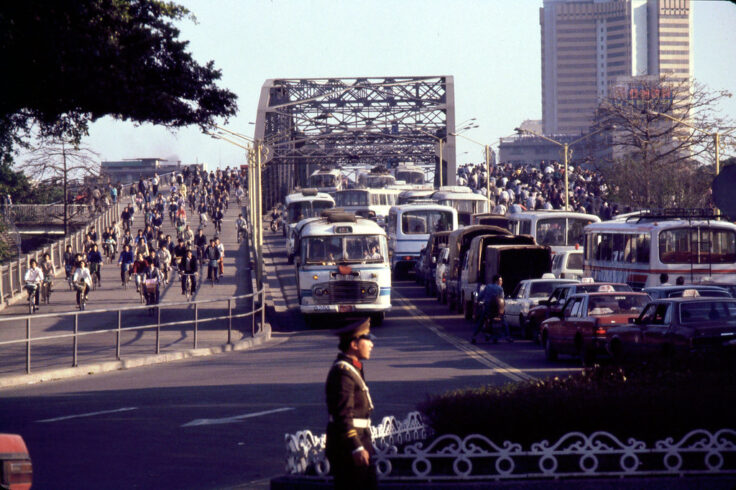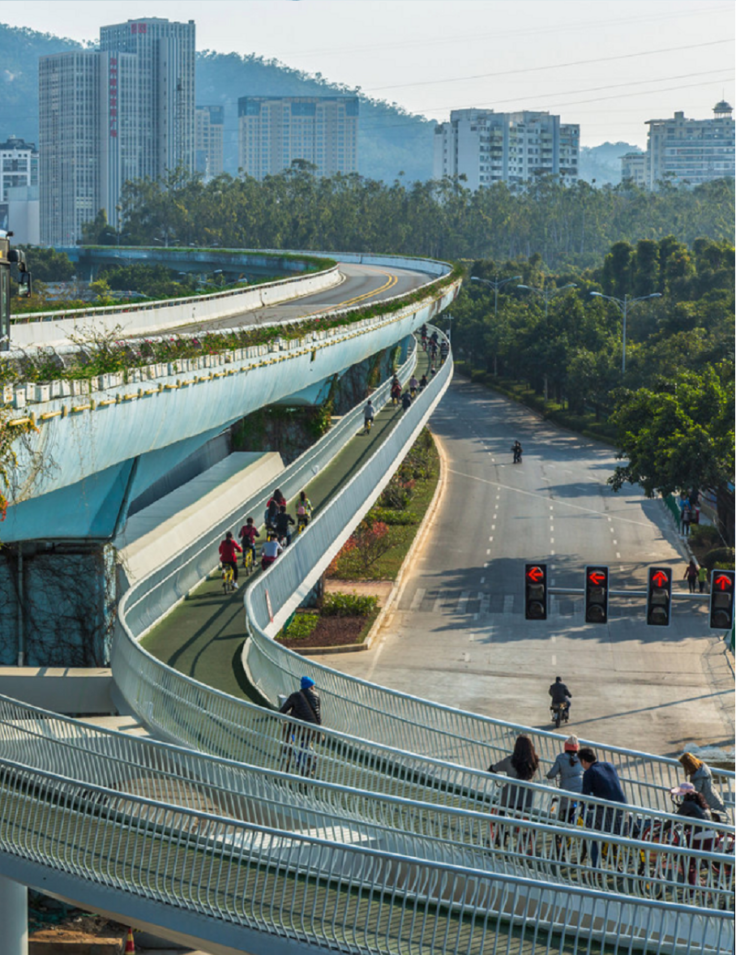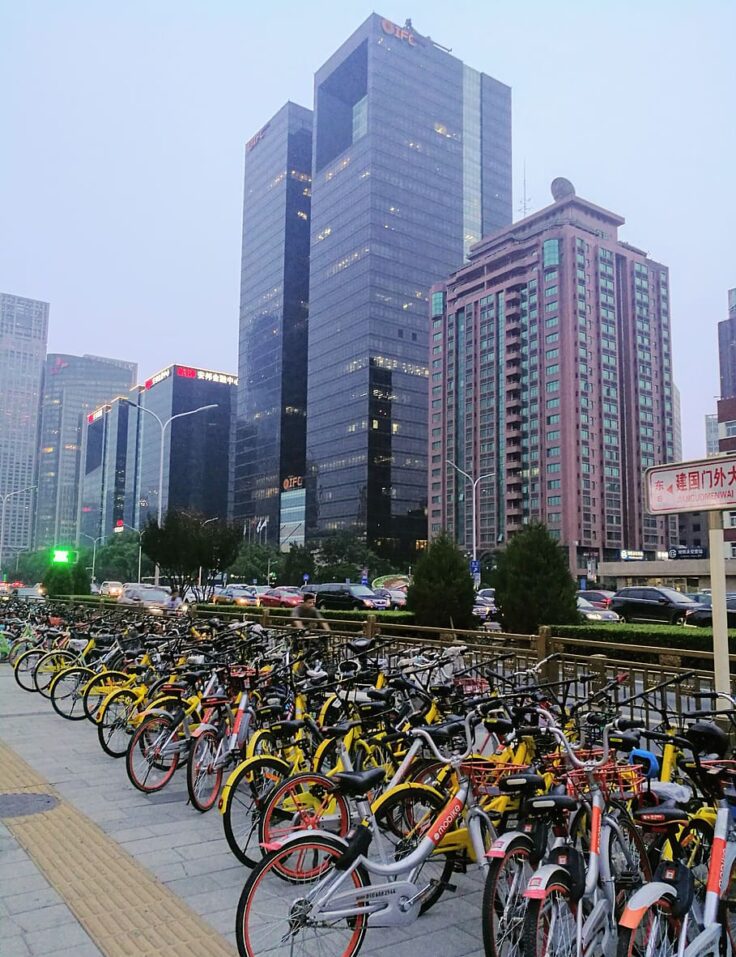What does the future of ‘cycling cities’ look like for China, what unique challenges do they face, and how are cities already taking action? Throughout much of the decade of the 1980s, it would not be uncommon to see thousands of cyclists, rather than cars, crowd the streets of major Chinese...

itdp.org
August 22, 2023
In China’s Cities, A Return to Cycling Prioritizes People and the Climate
What does the future of ‘cycling cities’ look like for China, what unique challenges do they face, and how are some cities already taking action?
This article, developed with
ITDP China, is the first in a three-part series highlighting the past, present, and future of urban cycling as a means for promoting sustainable and active mobility across China. Read the second piece
here.
This article was authored in collaboration with ITDP team members He Kanghao and Hu Qianqian.
Throughout much of the decade of the 1980s, it would not be uncommon to see thousands of cyclists, rather than cars, crowd the streets of major Chinese cities during the rush hour commute. In many ways, the nation’s relationship with cycling as a form of urban mobility has evolved and changed in line with the
cultural and political transformations of the 20th century. By the 1980s and 90s, bicycles had become an essential, daily instrument for most Chinese households. In fact, cycling was so dominant for transport and leisure in those years, the country was often recognized as the ‘
Kingdom of Bicycles’ by many foreigners.
Fast-growing cities across China thus supported urban cycling as a convenient means for daily transport, leisure, and exercise, with bicycle ownership becoming a symbol of progress and status for many city dwellers. However, with emerging influence from the West, booming city populations, and rapid economic development, cycling began to decline throughout the 1990s as highways and motor vehicles gained popularity. This decade witnessed a dramatic transformation in the physical and socio-economic fabric of China’s cities as they grew in both
size and population, and rapid sprawl and car ownership became closely tied to economic growth.
Cycling was a mainstay of China's streets, as seen here in Beijing, in the decade of growth in the 1980s following the Cultural Revolution.
As the country's economic and urban development surged, cycling-friendly roadways in cities like Guangzhou began giving way to car traffic and congestion.
In a 2022 report, ITDP found that building networks of protected bicycle lanes in cities can be key to reducing emissions.
Learn more.
As with many U.S. cities in the middle of the century, a pattern of outward urban growth and car-centric planning took over China, accompanied by a major shift in mobility for millions of Chinese. The once-prominent bicycle gave way to private vehicles, expansive highway construction, and rising transport pollution. Now, as the impacts of fossil fuels and emissions become a global policy focus for the world’s largest economies, China’s cities have begun re-evaluating the past two decades of development strategies, with the transport sector taking the spotlight. As
national proposals and goals for carbon peaking and carbon neutrality emerged in the 2010s, Chinese cities began recognizing the need to embrace more climate-friendly mobility in order to meet their emissions-reduction targets.
As a result, cycling-focused infrastructure projects and policies are emerging as an approach for cities seeking to reduce driving and associated emissions, improve livability, and create more people-centered environments. Concepts such as “low-carbon travel”, “green travel,” and “slow-traffic networks” are even mentioned in China’s
14th Five-Year Plan and in its national
Peak Carbon Action Plan. Under the concept proposed by the country, provincial and municipal governments have started to establish guidelines for building better walking and cycling environments in urban areas to reshape major cities with both short- and long-term measures.
By the middle of the 1990s, urban cycling as a daily transport mode was usurped by private vehicles, rising congestion, and worsening air quality as China's cities sprawled outward.
The capital city of Beijing has launched a
Planning, Guidance, and Cycling Action Plan to create a more cycling-focused city by 2035. Similarly, in 2022, a new version of the
White Paper on Shanghai’s Transportation Development noted that in the next ten years, it may be possible to keep the average commuting time in the large city to less than 45 minutes by prioritizing multi-modal transport, enhancing the commuter experience, and creating streets that emphasize walking, cycling, and road safety. China has also been actively strengthening its public outreach on sustainable mobility and educating residents on the benefits of greener development and transport interventions. Every year, municipalities organize activities such as
China’s Cities Without Cars Day (first designated in 2007),
Green Travel Awareness Month, and
Public Transport Awareness Week to promote public transport use and to encourage residents to walk and cycle more regularly.
Throughout the COVID-19 pandemic in 2020, it is well-known that
cycling ridership and demand boomed worldwide as people avoided crowds and public spaces. In China, the largest region for
bicycling manufacturing, this pandemic shift towards cycling not only boosted economies but also helped many to rediscover the potential of bicycles as a daily mode of exercise and travel. Currently, the market for national bicycle sales in China is
estimated to reach $16.5 billion USD by 2026. While still a far cry from the 670 million bicycle owners recorded in the early 1990s, the domestic population of bike owners is swiftly climbing once again, now to a reported
120 million people in 2020 based on production figures. When it comes to electric bikes (e-bikes), that number is even greater — there are an estimated 350 million
(as of 2022
) on China’s roads, a number that is expected to continue to rise.
In recent years, China has been working to invest in infrastructure (like this
elevated cycleway in Beijing, left) and to regulate
bikeshare systems (right) to promote cycling and reduce driving.
China’s dominance in bicycle manufacturing and exports continues to spur major
economic growth following the pandemic, in both direct and indirect industries, and this potential is steadily becoming a component of domestic transport policies. For example, cycling’s role as a carbon-zero transport mode and economic boon is giving it precedence in
China’s recent climate frameworks. While barriers certainly still exist in shifting driving behaviors and improving road safety, the concept of “people-oriented” urban development is now being steadily embraced by Chinese citizens, encouraged by local governments, and welcomed by transport advocates. With over 65% of the population living in cities (over 920 million people as of 2022), China’s decision-makers are recognizing that sustainable infrastructure and policy implementation is critical to encouraging citizens to adapt to low-carbon transport modes, with cycling as the center.
While the recent surge in urban cycling demand holds promise for China’s future, particularly after decades of car-focused development, there is still a long road ahead to make sure that is prioritized alongside public transit. To encourage a major, long-term shift in commuting behaviors and consumption, there needs to be a wholesale re-imagining of China’s urban infrastructure, investments, and policies at the municipal and national levels. This includes not just the technical and physical infrastructure, but also supportive systems that address road safety measures, street design, community engagement, and much more. Promising progress is underway — now, it is the time for rapidly growing and major cities in China to continue committing more resources towards cycling and turn the ‘Kingdom for Bicycles’ into a model for the world.
In the rest of this blog series on cycling in China, we will highlight
challenges and opportunities facing the sector as well as case studies of the progress being made in three major cities — Guangzhou, Tianjin, and Yichang.
Since 2021, ITDP’s Cycling Cities campaign has been collaborating with partners around the world to bring cycling access to 25 million more people by 2025.
Learn more


itdp.org





